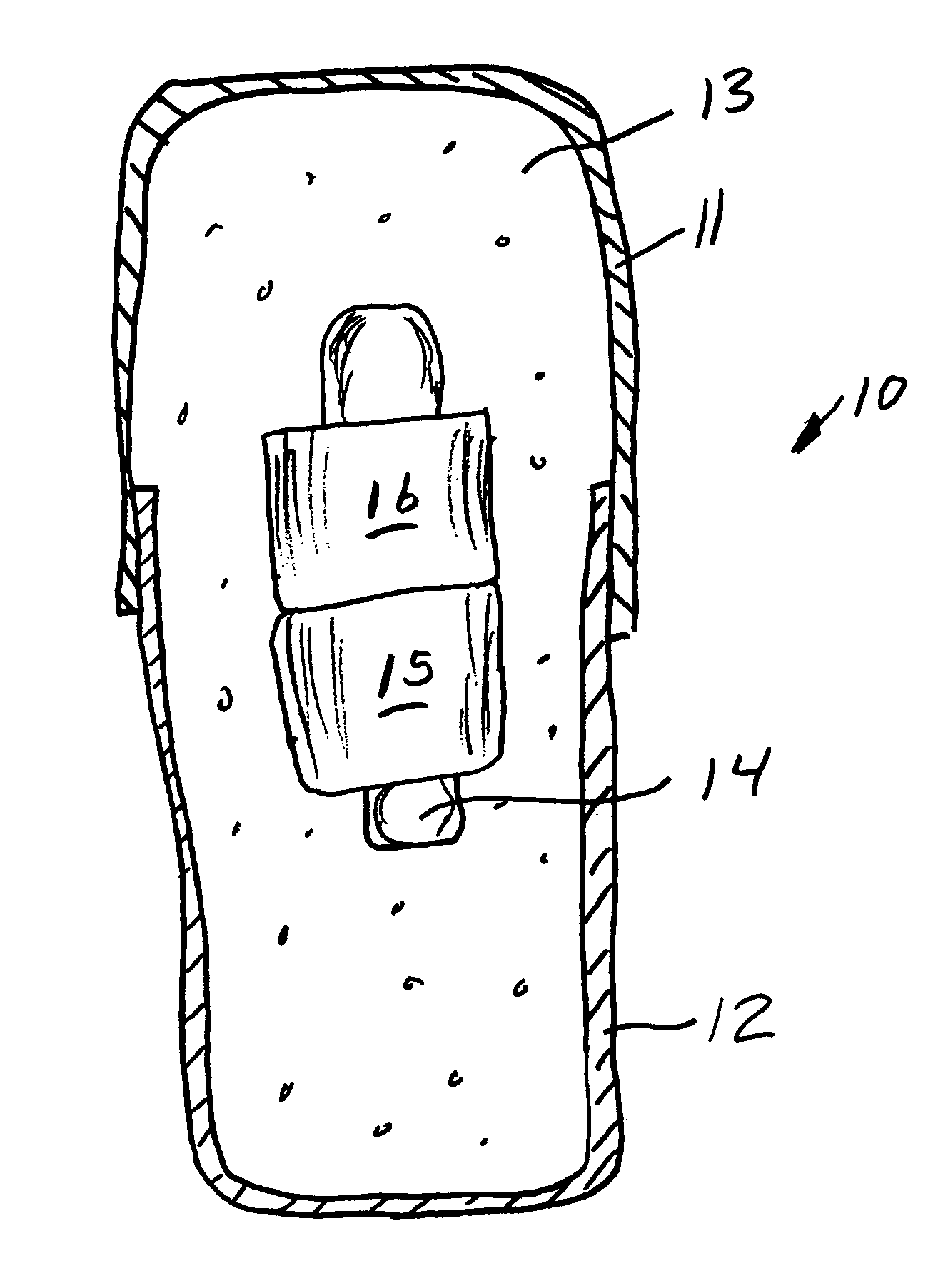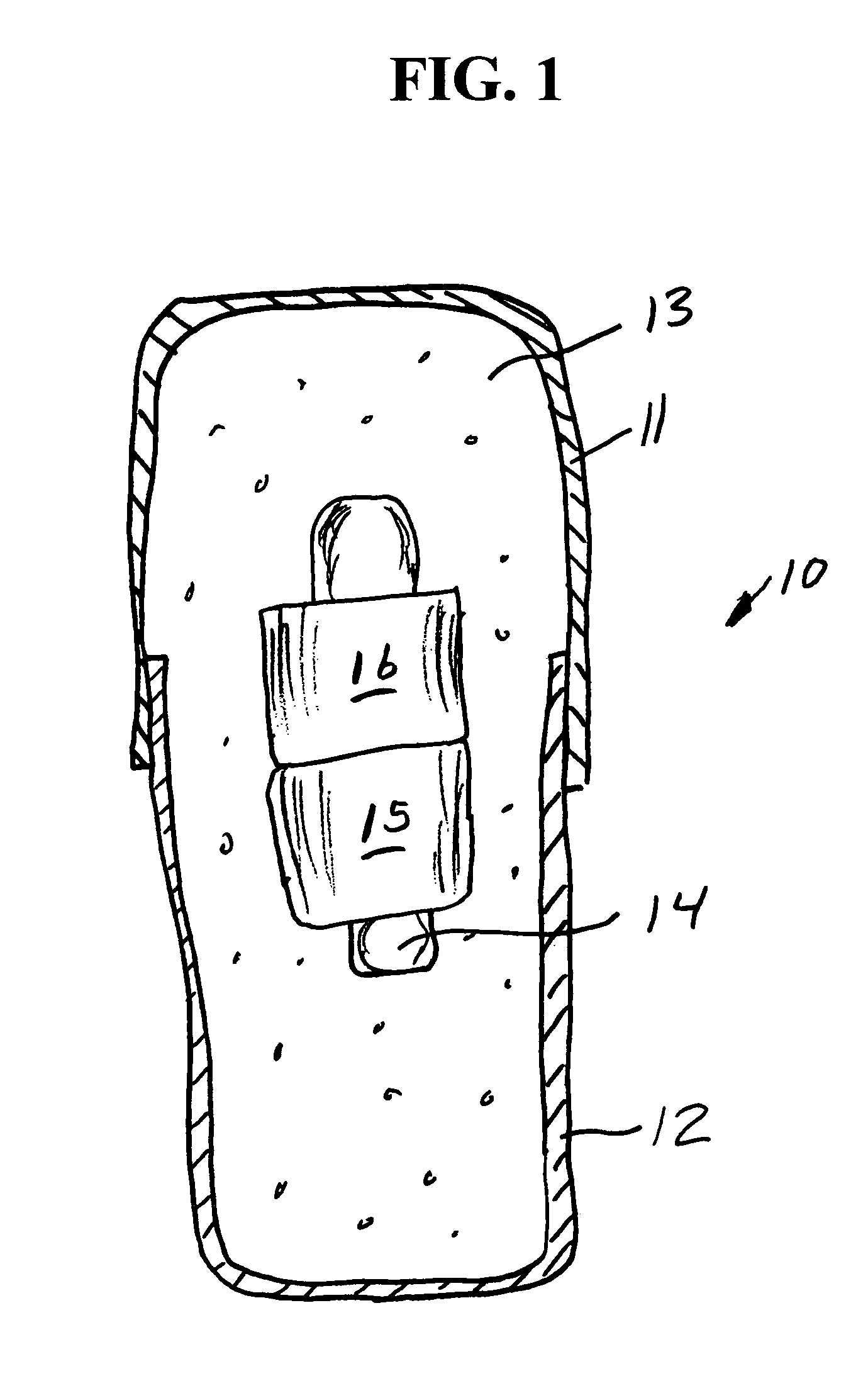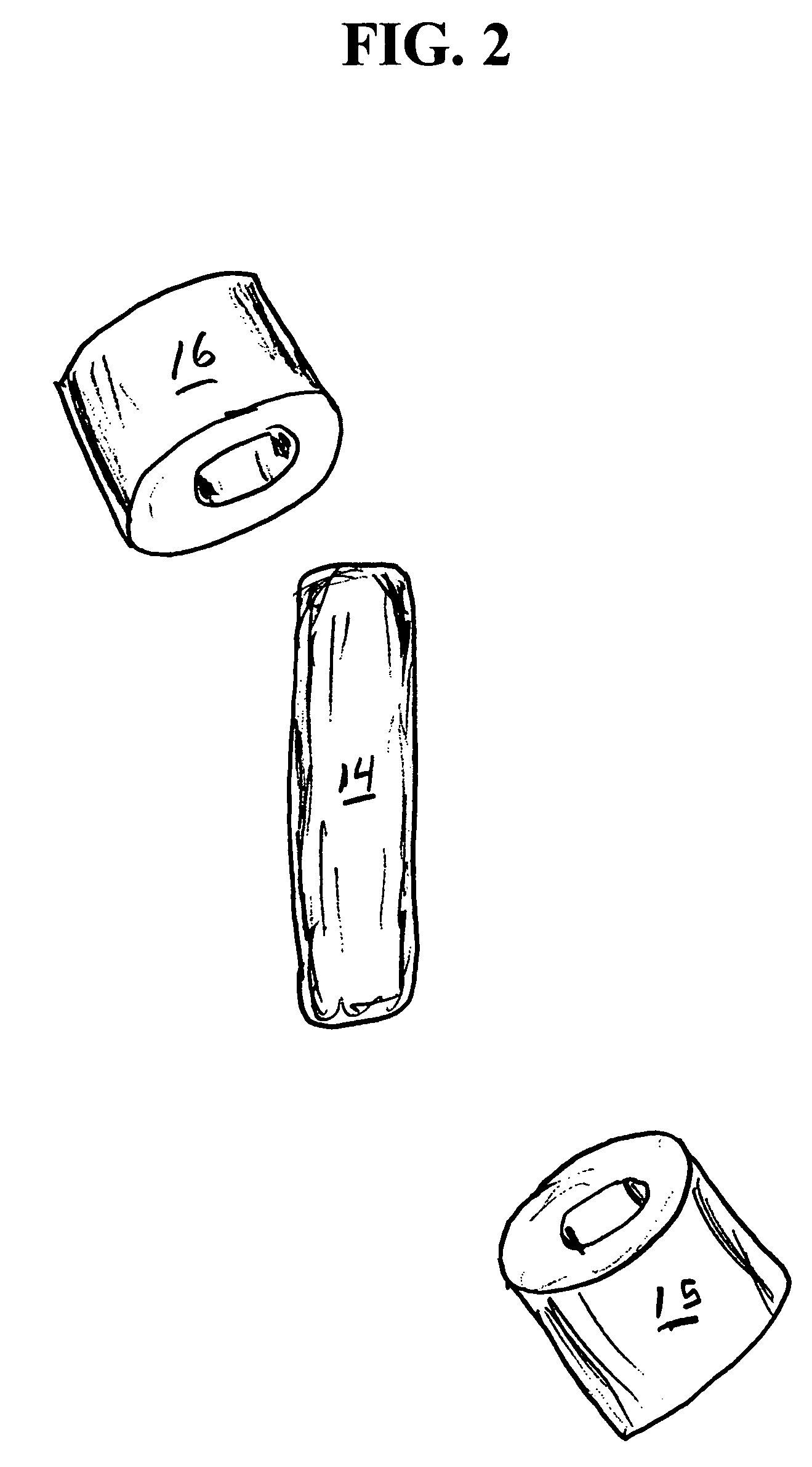Oral drug compliance monitoring using radio frequency identification tags
a radio frequency identification and compliance monitoring technology, applied in the field of radio frequency identification tags, can solve the problems of drug wastage, drug waste, drug wastage,
- Summary
- Abstract
- Description
- Claims
- Application Information
AI Technical Summary
Benefits of technology
Problems solved by technology
Method used
Image
Examples
example 1
[0068]A series of six uniquely coded glass encapsulated animal permanent identification RFID tags (Stoelting Company, Wooddale Ill.) are covered with ferrite rings (National Magnetics Group, Bethlehem Pa.) and placed in gelatin capsules with a simulated drug formulation consisting of food grade lactose (substantially as shown in FIG. 1). The capsules are each interrogated with a portable RFID reader (Allflex ISO Compatible RF / ID Portable Reader Model No. 930002-001) but the reader indicates “No Tag Found”. The capsules are placed in a series of one liter beakers containing 900 mL of USP Simulated Gastric Fluid at 37 degrees Celsius with agitation. The capsules disperse and the reader held at a distance of about 10 centimeters from each RFID tag responds “Tag Found” at the following times: 1.50, 1.80, 1.85, 1.87, 1.88 and 1.95 minutes.
example 2
[0069]A series of six uniquely coded glass encapsulated animal permanent identification RFID tags (Stoelting Company, Wooddale Ill.) are covered with ferrite rings (National Magnetics Group, Bethlehem Pa.) and placed in gelatin capsules with a simulated drug formulation consisting of food grade lactose (substantially as shown in FIG. 1 except that three ferrite rings are used). The capsules are each interrogated with a portable RFID reader (Allflex ISO Compatible RF / ID Portable Reader Model No. 930002-001) but the reader indicates “No Tag Found”. The capsules are placed in a series of one liter beakers containing 900 mL of USP Simulated Gastric Fluid at 37 degrees Celsius with agitation. The capsules disperse and the reader held at a distance of about 10 centimeters from each RFID tag responds “Tag Found” at the following times: 1.58, 2.22, 2.33, 3.25, 3.50 and 7.92 minutes.
example 3
[0070]A series of uniquely coded glass encapsulated animal permanent identification RFID tags (Stoelting Company, Wooddale Ill.) are covered with a pair of ferrite rings (National Magnetics Group, Bethlehem Pa.) and placed in gelatin capsules with a simulated drug formulation consisting of food grade lactose (substantially as shown in FIG. 1). Four healthy adult beagle dogs are dosed orally with a single capsule containing the RFID tags and ferrite rings. To read radio signals from the RFID tags, the receiver (Stoelting Company, Wooddale Ill.) is held manually within ˜2 cm from the skin of the dog's abdominal region. The time for the first reading of the RFID tag after dissolution of the capsule and release of ferrite sleeves is determined at 1-minute intervals until the first reading is successfully achieved. Subsequent signals are read over time (1,2,4, 8 and 24 hours) thereafter until the RFID tags and ferrite rings passed through the gastrointestinal (GI) tract to be recovered f...
PUM
 Login to View More
Login to View More Abstract
Description
Claims
Application Information
 Login to View More
Login to View More - R&D
- Intellectual Property
- Life Sciences
- Materials
- Tech Scout
- Unparalleled Data Quality
- Higher Quality Content
- 60% Fewer Hallucinations
Browse by: Latest US Patents, China's latest patents, Technical Efficacy Thesaurus, Application Domain, Technology Topic, Popular Technical Reports.
© 2025 PatSnap. All rights reserved.Legal|Privacy policy|Modern Slavery Act Transparency Statement|Sitemap|About US| Contact US: help@patsnap.com



